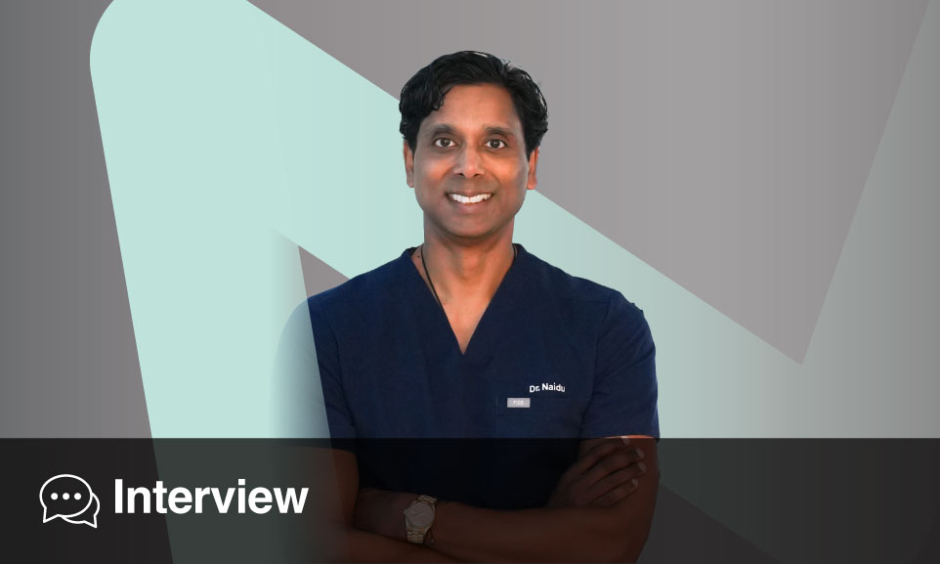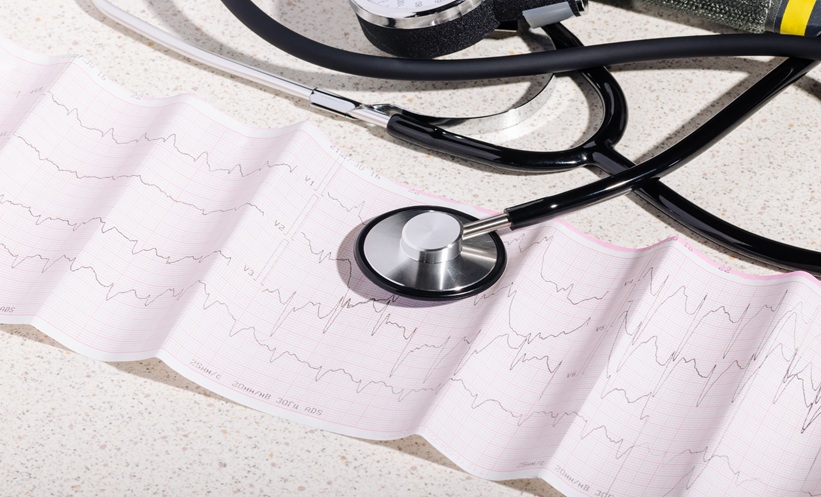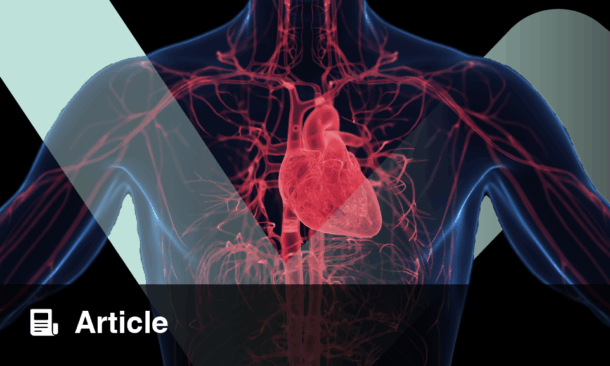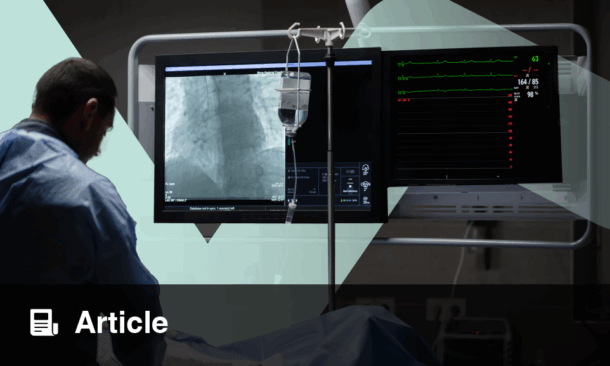Srihari S. Naidu | System Director, Cardiac Catheterization Labs; Director, Hypertrophic Cardiomyopathy Center; Department of Cardiology, Westchester Medical Center (WMC) & WMCHealth Network, New York; Professor of Medicine, New York Medical College New York; President, Society for Cardiovascular Angiography and Interventions (SCAI); Trustee Emeritus, Brown University, USA.
Citation: EMJ Int Cardiol. 2025;13[1]:68-71. https://doi.org/10.33590/emjintcardiol/FWVL2152
![]()
EMJ spoke with Srihari S. Naidu, who shared insights into his pioneering work in alcohol septal ablation, his contributions as a published children’s book author, and his ongoing leadership in shaping the future of cardiology as the new Society for Cardiovascular Angiography and Interventions President.
As a pioneer of alcohol septal ablation, and the highest-volume operator of this procedure in the USA, can you explain how alcohol ablation compares to surgical myectomy and medical therapy for treating hypertrophic cardiomyopathy?
This has been a 20-year process, because when I first got involved in hypertrophic cardiomyopathy (HCM), we only had traditional medications, such as beta blockers, or open-heart surgery. But it wasn’t available widely and was only offered at a few centres in the United States, at a high level.
About 30 years ago, a procedure called alcohol septal ablation (ASA) was invented in Europe, by Ulrich Sigwart. It was considered a novel, albeit outlandish, procedure because it effectively causes a controlled heart attack to a portion of the heart muscle that is otherwise too thick. I was an early adopter of that within a few years in the USA, as it came out right when I was training. I subsequently became someone who was a go-to person for that procedure in the early days. For some time, it was not really accepted because only a few places were doing it, and surgery was the dominant treatment. But there was definitely a need as patients were struggling with debilitating heart failure symptoms, the medications were not ideal, and surgery was still considered somewhat risky.
On that note, ablation versus myectomy has been a long-standing debate. I remember doing some of these debates in Europe, as well as in the USA, over the years, because people want to know whether a minimally invasive option is actually better. The truth is, it is better in the right population and worse in the wrong population. This means that some patients achieve a better success and short- and long-term outcome with surgery, and others do so with alcohol ablation. In general, alcohol ablation requires a skill set in interventional cardiology, and a meticulous attention to detail to allow just the ablation of the offending myocardium. Compared to surgery, one of the problems is that we’re limited by the arterial tree in the coronary system, meaning that we can only do an ablation targeting the area of the septum that the arteries go to, with some diffusion to some of the neighbouring myocardium. Because of that, it’s a little bit more of a hit or miss compared with surgery, where they can essentially surgically remove the myocardium in a more visualised way.
The challenge with myectomy, though, is that since very few people do it, there are a lot of failures, usually caused by not taking out enough muscle or not taking out the muscle in the right location. So, unless you’re getting it done at an expert centre, there is a high failure rate. However, if both are done in expert centres, there are still some noticeable differences. In general, the mortality rate from alcohol ablation is less than the mortality rate for myectomy; it should be less than 0.23% with alcohol ablation, compared to approximately 0.5% with myectomy. But in the real world, the mortality rate could be even higher with the myectomy in particular. So, as one would expect, the minimally invasive procedure has a lower mortality in the real-world setting. On the other hand, alcohol ablation has a higher pacemaker risk, because it’s often performed in older patients who have too many comorbidities for surgery, so they tend to have a pacemaker rate somewhere in the 10–20% range. On the flip side, surgery would be ideal for patients who are much younger.
As I mentioned previously, beta blockers were the mainstay, but now we have these medications that target the myosin apparatus itself and reduce contractility. So, over the past couple years in the field, rates of both alcohol ablation and surgery have gone down, probably by about 50% in expert centres, but they’re still available because some patients want a durable result without the need for medication. Now, more patients want to try medication first, and that’s kind of how we’re doing things right now. There are pros and cons to each of these three modalities, and what’s most important is to get to a centre that has all three opportunities for your patients: medications, alcohol ablation, and surgery, so that they can use their experience and their expertise to individualise care for a given patient.
Your annual proctorship programme trains physicians in ASA techniques. What barriers hinder broader adoption of ASA both in the USA and other countries, and how can the cardiology community address them?
Attitudes clearly differ between Europe and the USA. In the USA, when we do large scale evaluations in the real world, about half of the patient population on medications have surgery, and the other half have alcohol ablation. When you do a similar analysis in Europe, it’s probably 80% receiving alcohol ablation, and if you go to Asia, the percentage undergoing alcohol ablations is even higher. In general, I think there has been a larger adoption of minimally invasive procedures in Europe and Asia, partly for spiritual reasons in Asia, and in Europe, I think it’s more due to lack of availability of surgical centres. Whereas, in the USA, there are many large centres that have shepherded hypertrophic cardiomyopathy care for many, many decades, and so surgery continued on as a primary modality. I do think that in the appropriate hands, the mortality rate is better and the efficacy is similar with alcohol ablation (in the appropriate patients), and so the only detriment really is the pacemaker rate. Mostly, patients over the age of 50 or 60 years typically don’t mind this, because if they get a pacemaker at that age, it’s usually not too much of a burden. It also allows monitoring of the patient for atrial fibrillation or other arrhythmias that might prevent sudden cardiac arrest down the line.
The problem with both of these procedures is that they are very hard to teach and, like any other procedure, you need to do a certain number of them to maintain the credibility and expertise over time. So, in the 2011 American Heart Association (AHA) guidelines, we recommended that institutions should do 10 procedures a year to maintain certification, credibility, and expertise, but very few places can do that. In our heyday, we were doing about 40 alcohol ablations and 30 myectomies a year here. Now, with the use of mavacamten and other cardiac myosin inhibitors, the volume of procedures done will be cut in half. So, one of the main challenges is, how do you set up major centres to offer this? With this in mind, we developed a course. It’s over 10 years old now; we had a break during the COVID-19 pandemic, but we’ve done roughly seven courses since its inception, and they have been very popular. The only way to learn this procedure is to see a few of them at once. We usually have about three cases over the course of 2 days, and then, through didactics, we discuss all of the alcohol ablation details, including preprocedural and intraprocedural planning and post-procedure management. We then take attendees through live cases, where we go through the procedure step-by-step on actual patients. Finally, we end with critical care rounds, where we look at the patients afterwards and discuss their ECG, pacemaker requirements, and how to manage them before they go home. It’s a very comprehensive course and we’ve probably trained over 100 people who have all gone out to do the procedure. So, it does work and now they have the experience. Even if they don’t do 10 per year, they have a network of individuals who they can run cases by and refresh their ideas on the tools and the equipment needed, and how to plan for that procedure for that given patient.
I do think that surgeons should do the same thing. They have not developed a course in this space. I have advised that they do because I think that both these procedures are very important and valuable for the population, including in Europe. About 10 years ago. Barry Maron wrote a paper entitled, ‘Bring Septal Myectomy Back for European Patients’,1 which was essentially a call to action, highlighting that we do need capable surgeons out there to do this. I would be an advocate for that as well.
In the surgery field, they train in their fellowships, but then afterwards there’s not a whole lot of training opportunities, from what I can see. I think it’s more in the mindset of interventional cardiology to proctor other people and spread these procedures more broadly. But I think within the surgical field, they tend to rely on their societies and their training pipeline, and not necessarily courses like these. Additionally, they tend not to train their competition. Now, you can say the same thing for interventional cardiology, but I specifically bucked that trend by saying: “I’m going to train people to compete with me.” That’s because the greater good is more important. I know it’s easy to say that, but the truth is that in any field, people tend to hold on to their trade secrets. Now, with that being said, I will say that our surgeons were trained by the Mayo Clinic surgeons, but that was through a personal relationship. Though I think the Mayo Clinic surgeons have done a good job of going out and training individual surgeons at other institutions, and I give them credit for that, I do wish that somebody would take the mantle and develop an actual course. We did think about expanding our course to include surgeons, but again, it depends on funding and the availability of surgeons who are willing to do it.
Can you tell us about your book, ‘Lindsay’s Big Heart’. How does improving patient/family health literacy correlate with treatment adherence and outcomes in the HCM population?
I’m a creative person; I like doing different things and coming up with new ideas. This idea came out of a desire to spread HCM awareness a lot broader, and books have a way of spanning globally. In other words, they can be translated to other communities. And actually, we’ve had some interest from the HCM Foundation in Europe, as well and other places, to translate the book.
The reason for spreading awareness for HCM is that most patients with HCM seek medical attention when they are middle-aged, which means that they have probably been living with their HCM for decades. It’s known to start in puberty and teenage years, so there’s usually a long latency period where they have the disease but no symptoms. We would like to catch people at that stage where they’re developing hypertrophy but don’t have symptoms, so we can start getting them treated earlier and possibly prevent progression.
The second issue is that a lot of these people have kids, and they have no idea how to talk to their kids about this disease. I feel like if a woman has breast cancer, they sit their daughter down, tell them about breast cancer, and why they need to have mammographies. However, we don’t do the same for other genetic diseases, like HCM, and because of that, I wanted to have a tool that parents can read to their kids while they’re young, before the HCM even develops, if it even develops. That way, when they get older and their ECG looks suspicious or they have symptoms, they will not be scared to tell their doctor that there is HCM in their family. At the moment, I do not see that happening, and the only way to get that to happen is to educate people at an age where they can see that this is running in their family and not be scared of it. That’s the second part of it, which is something the book really addresses: how to digest this disease as one thing in your family and not be scared of it.
What you see is a young girl go through this and lead a very happy, normal life. It shows that none of the testing was scary, and she can go on to do all the things she wants to do; she just happens to have this bigger community of physicians, parents, and other people who now know her and how to protect her, including having defibrillators in the school and people around her knowing CPR. So, I think the book comes out of this genuine idea to have a resource for kids where they can be curious and understand their disease in a way that makes sense to them.
At the same time, we didn’t want to water the information down. We made sure that the book has pictures that are accurate, and every picture included has educational value, including having defibrillators visible and showing the different testing that people get throughout their evaluation and management. I spent a lot of time on additional pages for parents at the end: two pages on how to keep your kids safe, and two pages that define all the complicated medical terms that even parents wouldn’t understand, so that they’re prepared when they go into their doctor’s appointment. So, there’s a little bit of a dictionary at the end to help people understand the top 20 words that come up in this disease. I wanted to make sure the book really spanned both parents and kids.
If we have the energy and funding, we would like to translate the book into different European languages, certainly Spanish and French, and then eventually Mandarin and Arabic. I’m not sure what else, but those probably cover a large portion of the world. HCM is a disease that spans both genders and all races, and happens in rich communities and poor communities; I do want to get it to all kids of the world. A 19 USD book is something that you can get everywhere, including for free in libraries, whereas actual healthcare is not quite as egalitarian.
Are you planning on writing any other books?
I’m not writing any at the moment, because I have a lot on my plate right now, but the publisher that we have has already mentioned that they would love to have more of a series. Lindsay Davis is one of my friends with HCM and this book is modelled after when she was around 8 years old, and Kiran, the boy in it, is my son, and it’s modelled after when he was also 8 years old. He’s sort of the ‘smarty pants’ kid who teaches her a lot whilst in the hospital after having a false alarm. So, I think one of the ideas was to have a Lindsay and Kiran series, where they can each be the protagonist, depending on the disease state. For example, the next book could be about Kiran’s peanut allergy. There’s so much opportunity to talk about something like that and make different conditions and diseases less scary.
Your work on the 2019/2022 universal cardiogenic shock definitions revolutionised trial design. How have these criteria impacted mortality stratification in recent studies like RECOVER III?
My other passion is cardiogenic shock, and thank you for the kind words. When you do something, you don’t think anything’s going to revolutionise anything. But certainly, there was a void that felt palpable in that we didn’t really know what we were treating. We’ve done a good job of treating heart attacks and basic heart failure, but patients in cardiogenic shock have historically had a 40–50% survival rate, which is very, very low.
It turned out that when they were doing a lot of these clinical trials, you could look at them and see very clearly that some of them included very sick patients with cardiogenic shock, and others had more lenient requirements for inclusion into cardiogenic shock groups. Then what happens is, it’s hard to know if the devices and the protocols that we choose are failing because the patients are going to fail no matter what, or because the patients are going to do well no matter what. It became very clear that we had to have more granularity in the definition of cardiogenic shock.
In 2019, I was fortunate enough to have the Society for Cardiovascular Angiography and Interventions (SCAI) do this commission and get some leading experts across the different fields that deal with cardiogenic shock. One thing unique about shock is that whilst it’s cardiogenic, it’s not just cardiology that is involved in its management; there’s critical care, emergency medicine, the emergency medical services (EMS) system, pulmonologists, renal physicians, and surgeons. There are so many different people dealing with this disease state that need to be involved, and because of that, we put together a consortium of individuals spanning all those different societies to get the different angles on how to treat this. Together, we came up with this definition of five different stages: A, B, C, D and E. C is the classic shock; E is extreme shock; D is in between, where you’re failing despite manoeuvres; B is pre-shock, meaning you don’t have any malperfusion, but you have signs that things are not going the right direction; and A is the broad base of patients that have the potential to develop shock, in that they have a phenotype problem, such as a decreased ejection fraction or abnormal valve, that could be a trigger for shock to be watchful for later down the line.
We were fortunate that trials started using this definition and looking at which patients benefit, which patients do worse, and which patients we should be studying. The big one that really made the news more recently is the DanGer Shock trial that came out of Europe with Jacob Eifer Møller et al.,2 which showed that if you include only stage C and D patients predominantly, there was a significant mortality reduction with use of the Impella microaxial-flow pump (Abiomed, Danvers, Massachusetts, USA). So, for the first time, it was demonstrated that by narrowing the shock definition to who we think would really need and benefit from interventions or protocols, we see a positive outcome. As such, I would give as much credit to the devices and protocols as I will to the inclusion criteria, and the fact that these weren’t patients with anoxic brain injury, which the definition provides as well.
The second thing is you alluded to the RECOVER study, and there’s been more and more data coming out of that. The most recent substudy looked at stage E patients in a lot of other databases. I, myself, was saying that if you’re in stage E, certainly if you have cardiac arrest, the mortality is very, very high. Discussions started to come up regarding whether treatment for such patients should be deemed futile. It turns out that the stage the patient is at 24 hours is more important, which is great because it means that we have a day, which I’ve been calling ‘The Golden Day’ to try to improve their clinical state and improve their shock stage.
A recently published study by Ivan Hansen et al.,3 showed that more than half of patients in the RECOVER III trial were stage E, and stayed in stage E, but the other half improved to stage C or D. Furthermore, the ones that improved actually had a much higher survival rate of over 60%, compared to 30% in the ones who did not. Thus, if you stay in stage E, you may have kind of a long course, and it may be hard, but if you get them to stage C or D, they do much better. Again, the staging is to be used as an active tool. Patients should be restaged frequently, with the aim to get them down within the first 24 hours, then you can expect a better survival. This is something I have recently named the ‘DLC’ for Door to Lactate Clearance.4 Now, how we do that is unclear, but there are some clues from that study, such as decreasing pressors, using Impella (Abiomed, Massachusetts, USA) before the percutaneous coronary intervention and trying to fix as many lesions as possible, which, of course, goes against the guidelines right now. But, at least in some subsets it looks like it might be beneficial, so, I’m very proud of the definition.
We are now in the starting stages of revising it for the second time, to come up with the 3.0 staging criteria. We have put together a larger consortium with similar individuals to take a look at the definition, identify the current gaps, and discuss how can we make it more granular and more appropriate and more prognostic, without losing its simplicity. Hopefully it will continue to move the field forward from there. So, about a year from now we will probably have that published.
As SCAI President-Elect, what specific initiatives will you prioritise during your upcoming presidency?
I’m very humbled about it because it’s been a 20-year journey; not to become SCAI President, but rather to be participating in SCAI. The organisation has given me a lot of opportunities, and I do feel that I was someone who would not have been discovered or embraced more widely if it weren’t for the society. In my clinical role I moved from academic places to more community hospitals, and traditionally, there’s less opportunities to be academic at these other hospitals. However, I think one thing that is wonderful about SCAI, and the interventional community as a whole, is that it doesn’t really matter where you practise, it matters that you practise, and it matters that you practise well.
What I also love about the SCAI is that it’s a global organisation, and even though it’s very clear that it was based in the USA and started here, I do think we have tried very hard to embrace interventional cardiologists across the globe, including Asia and Europe. Now of course, Europe has its own strong societies and programmes, but we are always here, available and willing to work with European colleagues as they see fit. As such, one of the things that I want to do within SCAI is to build some of the global community a little bit more. We’ve always had an international community, and as a committee, we do a lot of global educational sessions. But I do think that there are opportunities to do more combined documents, more combined scientific publications, more combined educational activities, and so on. We want to move the field in the same direction globally, as opposed to country-by-country. Thus, one of my initiatives is to be more strategic in our alliances. Firstly, within the USA with areas outside of cardiology, such as the American Hospital Association (AHA), insurance companies, and the government, and secondly, more broadly across the world, where it makes sense to improve care more globally by using minimally invasive procedures that we know are beneficial in certain subsets.
The second thing that I want to do is to really focus on wellbeing. For about 40–50 years now, since the invention of angioplasty, we’ve been working in leaded, burdensome physical environments with radiation exposure. It’s very clear now, that there are significant risks of orthopaedic injuries and cancer that we all didn’t want to believe, but when there’s cancers only on one side of your body, it’s a problem. When brain tumours are always on one side of your body, it’s clearly related to the side that’s affected by radiation. I do not think this is a sacrifice individuals should make for the greater good. Therefore, one thing we want to do is continue working with companies to really broaden the penetration of the lead-free environment in Cath Labs across the world, so that we can remove the lead, and also remove the cancer risks at the same time. This is one thing that my predecessor, James B. Hermiller, had been promoting.
The second part of it though, which I think is also important, is that there’s a huge amount of burnout, mental health problems, and fatigue in our field. We are working at night, we’re working during the daytime, and we’re expanding our field further, into work on stroke and pulmonary embolism, etc.; so, we’re doing more and more. Today, if you look at what surgeons do versus what interventional cardiologists do, almost everything is becoming minimally invasive. We are happy to be that workforce and do that good for society, but at the same time, we have to make sure that we take care of the caretaker, so to speak. That means we need to embrace this as a career that allows us to breathe our life into it.
I’m very much someone who likes to maintain hobbies, health and fitness, and family and friends, which is very hard to do in our field. But these are the things that help to avoid burnout, because they allow us to minimise repetitive tasks and have a life outside of our careers. So, during my term as SCAI President, I will certainly increase the wellness aspect and allow people to really focus on what makes them happy, so that they can be better interventional cardiologists inside the lab, but also better family members, colleagues, and friends outside the lab. I post songs on Twitter that I sing, I post about my book, and every once in a while, I’ll post some fitness things, and I certainly post about time with my son and whatnot. I’m also a basketball fan, so I’m somebody who tries to promote the other aspects of my life. This is mainly to show people that they’re allowed to do that, and so during my term I will certainly explore allowing people to be who they truly are, and to not forget who they are.
I also think that we need to retire. Our prior generation didn’t retire, and it’s partly because they don’t know what to retire to. But if they maintain these hobbies and these other outside interests and happiness, it becomes very obvious that at some point you want the last 10 or 15 years to yourself, to really re-explore who you are, maintain some of those hobbies and passions, and be able to relish and look back on the career you had, and the service you gave.
I also want SCAI to increase its scientific output and do more guidelines that are specific to the procedures that we do, such as procedures in the transcatheter aortic valve replacement space, and in the patent foramen ovale space. These are areas where we are on the ground, and we need more in-depth information beside what the American College of Cardiology (ACC) and European Society of Cardiology (ESC) can do. For our members, I think we can dive in deeper there and do a better job of that. And so, I will be promoting more publications and a higher reach for the Journal of the Society for Cardiovascular Angiography & Interventions.
There are also a couple of other things to prioritise. One is the phenomenon called ‘the leaky pipeline’ for women and for mid-career men as well; where in the middle of your career, usually 10–20 years out, oftentimes people can get lost. They get busy, and there’s less resources for them. So, we are going to double down on the SCAI emerging leader mentorship (ELM) programme and enable more training and leadership skills for people in the mid-career stage. The idea is to get those people re-engaged with the SCAI. Some of them will be ELM alumni, but others will be people who are just doing phenomenal jobs around the world, and we want to encourage them to come on in and get maybe a 2 day course on how to lead large scale trials, how to be chiefs and directors of major institutions, how to get big grants, and other things that move the field forwards and also ensure we don’t lose track of people who need those resources and don’t have them locally.
And then finally, I will say that since I’ve been involved in the cardiogenic shock space, the simplistic five tier definition has blossomed out, and has become more and more complex. Now we have different phenotypes and different perfusion markers, different metabolic states, congestion profiles, and it has become confusing again. When things get confusing, you lose sight of the prize, so I’m trying to bring back the prize, which is that, as I alluded to in the RECOVER III trial above, it is far more important to know where the patient is at 24 hours than it is when you first see them.
As discussed, I’m calling it the ‘door to lactate clearance’, or the DLC. I’m challenging the whole field to focus on the lactate and getting it clear within 24 hours, because if you do that, mortality will be much lower, probably less than 20%. This is similar to the call for door to balloon times of 90 minutes in the heart attack population, which revolutionised that process.
The data is showing that all roads lead to Rome, in that if you can get the lactate down, these patients will do better and survive more. Now, how you do that is going to be up to individual teams, the individual tools, individual medications, or whatever you have, because everybody has different things. You have rural parts of India and you have very fascinatingly complex technological parts of metro areas, but they all should be able to focus on something that they can do to get the lactate down with the resources that they have available. Some places will go straight to surgery, whereas other places will go straight to Impella, and others will do extracorporeal membrane oxygenation. I want to be agnostic to all those things and focus on the prize, which is getting the survival up. At the same time we will have to provide guidance on how to use the DLC, make sure that people don’t find shortcuts that are on balance negative, and aren’t also unnecessarily aggressive; these will all be developed during the next year. So, overall I will be challenging people to focus on cardiogenic shock as an important final frontier in cardiology. And SCAI will have several educational initiatives and publications in this space over the year.
Any final comments?
Just like SCAI embraced me, I think that sometimes as organisations get bigger, they may seem impenetrable in a way, but I would tell people to contact me, or anyone they know working at SCAI, and tell them what they’re passionate about, and how they can contribute to the organisation. SCAI will always find a role for people who are interested, and who are team players.








